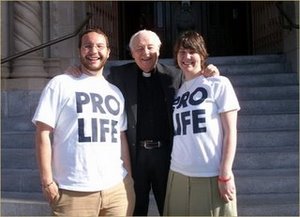If you put stock in the media hype, the hit TV show, “Glee,” is breaking new ground this week.
The game-changer in the controversial episode consists of two parallel sexual initiations - one a heterosexual teen couple and the other a homosexual teen couple. This may be new in the sense of it being even more corrupting than previous episodes or containing even more indecent material shoved in our faces, but it’s certainly not a positive new development. Such media promotion of early sexual activity - not to mention the promotion of gay behavior - flies in the face of what is best for teenagers and bucks the current, more positive trends that show teen sexual activity, teen abortions and teen births declining.
Anyone familiar with social-science research knows that abstinence is healthiest for teenagers. Teenage sexual activity routinely leads to emotional turmoil and psychological distress. Rather than increasing a teen’s self-confidence, engaging in sexual activity leads to empty relationships, feelings of self-contempt and a sense of worthlessness - typical precursors to depression. In fact, sexually active teens are more likely than those who are abstinent to attempt suicide (15 percent to 5 percent for girls, 6 percent to 1 percent for boys). Only 1/3 of girls who had early sexual activity describe themselves as “happy” as compared with more than half of those who waited. But the most telling fact is that the majority of teenagers who have engaged in sexual activity express regret over experimenting sexually and wish they had waited longer to have sex - 72 percent of girls and 55 percent of boys.
The bottom line is that more than two-thirds of teens who become sexually active admit they wish they could go back to sexual innocence again and wish they had waited.
Concerned Women for America released a major study on sexually transmitted diseases in July that describes some 49 types of STDs, some curable, others not. Twenty percent of all AIDS cases are among college-aged young people. Having three or more sexual partners in a lifetime multiplies by 15 a woman’s odds of contracting cervical cancer. The shocking facts about the extent of STDs among young people are documented by the Centers for Disease Control and Prevention - 19 million new cases a year, with half of those cases among 15- to 24-year-olds. These STDs are hidden by the glossy advertisements in the media that make them appear to be an insignificant health threat and suggest that all are cured or controlled without difficulty or complications (as anyone who has seen the TV ads for herpes medications can attest). Sadly, most of the young people with STDs will be dealing with the symptoms and consequences for the rest of their lives. In the United States, new cases of STDs are triple what they were just six years ago. Many of the STDs are incurable and others have persistent, significant symptoms requiring bothersome, expensive, lifelong treatment.
We have begun making headway with teen births. The latest birth data for 2009 show that the teenage birth rate fell 6 percent to 39.1 per 1000 women. In addition, the number and rate of births to unmarried women declined, but the percentage of nonmarital births increased to 41 percent. These numbers indicate a glimmer of hope that some truths about sexual realities are breaking through in contemporary culture. The bottom line is this: The radical rhetoric of the past 40 years is not quite as in vogue as it used to be, but its ethic of sexual experimentation is widespread and firmly rooted in the popular culture - as evidenced by “Glee.”
The media have saturated our culture with the myth of sexual freedom and public schools, along with Planned Parenthood and theSexuality Information and Education Council of the United States, have implicitly condoned, if not actually promoted, sexual permissiveness via “comprehensive” sex education which sells the idea that casual, recreational sex is acceptable for singles as long as the persons involved are “responsible,” defined as using a condom.
But that isn’t true, particularly for teens. Early sexual activity means more sexual partners. If a girl begins sexual activity in her early teens, she is, on average, likely to have more than a dozen partners over her lifetime, and the “turnover” rate of partners is more than four times as high among those who begin sexual activity in their early 20s. Such girls are also more than twice as likely to become infected with STDs. And about 40 percent of teens who are sexually active eventually become pregnant out-of-wedlock.
The vast majority of young people - 92 percent - think marriage would make them happy and want to be married some day; most also want to have kids. The assault on teens - telling them casual sex is “no big deal” and has “no consequences” - will not be neutralized until those who know better find their voices and convince today’s “Glee” generation that only discipline and restraint will open the gateway to achieving dreams and ambitions. Our culture must change to cultivate the attitude that says, “I won’t mess up my tomorrows by fooling around today.”
Janice Shaw Crouse, author of “Children at Risk” (Transaction, 2010), is director of Concerned Women for America’s Beverly LaHaye Institute.
© Copyright 2011 The Washington Times, LLC.
Tuesday, November 22, 2011
Subscribe to:
Post Comments (Atom)















No comments:
Post a Comment